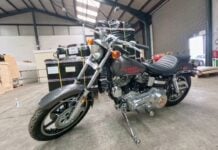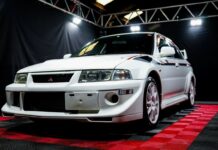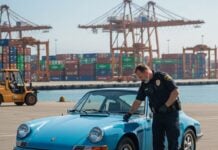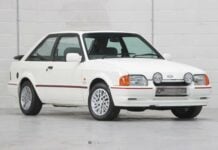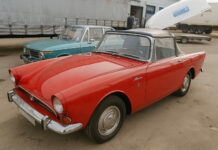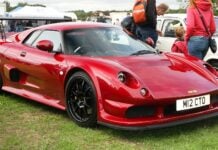As well as shipping cars for customers who are relocating overseas, or those who are buying their ideal car from the UK for personal use on the roads of the USA, Canada, New Zealand or other country abroad, Autoshippers have many commercial customers who are exporting vehicles from the UK to sell.
These commercial customers regularly come back to us due to our dedicated and knowledgeable customer service team, who they know will look after their vehicle as if it were their own. Using our extensive shipping options, nationwide UK collections and first-class vehicle marine insurance cover they can be safe in the knowledge that their purchase should arrive in the same condition as it left the UK.
Good news for them, and good news for their customers.
One such commercial customer purchased a fantastic MG MGB and had a buyer waiting in Australia. Along came Autoshippers with our expertise to help with the shipping process.
The British Motor Corporation (BMC)
The British Motor Corporation (BMC) holds a significant place in the history of the British automotive industry. Formed in 1952, BMC was the result of a merger between two prominent car manufacturers, the Austin Motor Company and the Nuffield Organization, which included the Morris, MG, and Riley brands. This consolidation aimed to create a more competitive and efficient company in the post-war British car market. BMC became one of the largest car manufacturers in the UK and played a pivotal role in shaping the country’s automotive landscape during the mid-20th century.
One of BMC’s most iconic achievements was the development of the Mini, introduced in 1959. Designed by Sir Alec Issigonis, the Mini revolutionized the small car segment with its compact size, transverse engine layout, and front-wheel drive. It became an automotive icon known for its practicality and fun-to-drive nature. The Mini’s popularity extended beyond the UK and found a global fan base. Over the years, BMC expanded its range to include various models like the Morris Minor, Austin-Healey, and, of course, MGB, all of which left their mark on the automotive world.
Despite its initial success, BMC faced financial difficulties in the 1960s. In 1968, BMC merged with the Leyland Motor Corporation to form British Leyland, marking a significant shift in the British car industry’s landscape. While BMC’s legacy continued within British Leyland, the company’s early years remain emblematic of an era when British car manufacturers were at the forefront of automotive innovation and design, contributing to the global automotive heritage we recognize today.
MG MGB – A British Icon
The MG MGB is an iconic British sports car that holds a special place in UK automotive history. Introduced in 1962, the MGB was designed to replace the aging MGA and marked a significant shift in MG’s approach to sports car manufacturing. The MGB retained the classic British roadster styling, with its sleek lines and two-seat layout, but incorporated modern engineering and design elements. This made it a popular choice among sports car enthusiasts and a commercial success.
Under the hood, the MGB featured a 1.8-liter inline-four engine that produced around 95 to 110 horsepower, depending on the model and market. The engine was paired with a four-speed manual transmission, providing a spirited driving experience. What set the MGB apart from its predecessors was its unitary body construction, which replaced the traditional body-on-frame design, improving structural rigidity and handling. The MGB was known for its precise steering and responsive handling, making it a joy to drive on winding roads.
Over the years, the MGB underwent several updates and variations, including the introduction of the MGB GT in 1965, a stylish coupe version with a distinctive fastback roofline. In 1974, due to stricter emission regulations in the United States, the MGB received a rubber bumper redesign, which altered its classic appearance. Despite these changes, the MGB remained a beloved sports car and was in production until 1980 when it was eventually replaced by the MG RV8. Today, the MGB continues to be a sought-after classic car, cherished by collectors and enthusiasts for its timeless design and driving experience.
Preparing and loading an MG MGB in a Shipping Container
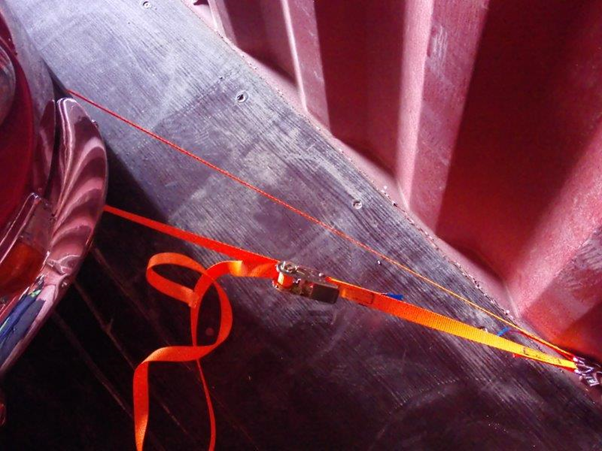

When you have a classic car, such as this glorious MG MGB, to ship from one country to another the safest way to do so is to load in its own dedication shipping container, we call this our FCL (Full Container Load) service. Although we have a specialist nationwide car collection service, on this occasion the customer decided to deliver this car to our container loading facility, which is located close to the outbound port for this booking.
To prepare for loading, each car undergoes a VCR (Vehicle Condition Report) which gives you peace of mind in respect of insurance coverage via our specialist vehicle shipping insurance broker, as well as having a record for you of any damages that the car may have incurred before it was left in our care.
Then the car is measured to ensure that the correct straps are used to properly secure it, and it is positioned within the container to begin the process using a specialised ramp and our experienced loading crew. A combination of soft tie-down straps and hard braces are used to safely restrict the lateral movement from front to back or side to side. These help to absorb any shock meaning that the car is safe and secure.
We also chock the wheels and apply the parking brake, as well as often using foam blocks for added scratch protection where needed. All loose items are secured, and the car is constantly checked to make sure it is fully stable within the container. Once loading is completed, a uniquely numbered bolt seal is fitted. This seal can only be removed by destroying it, meaning that the container doors cannot be opened until the seal is broken by authorised personnel at its destination.
Shipping an MG MGB to Australia via FCL


Once the container is loaded and the seal added, it is then transported to the UK port to be loaded onto the shipping vessel. These vessels can take anything from 5,000 to 20,000 containers, and they are used throughout the world to ship commercial cargo from country to country.
Our container embarked from Felixstowe port on a vessel bound for Melbourne, and kept our customers MG MGB safe and secure throughout the trials and tribulations that a container vessel meets on its 41-day journey from the UK to Australia.
After sailing from the UK, we provided our customer with a copy of the Bill of Lading, which essentially is a receipt provided by the shipping line for the shipper and consignee. It documents the container and seal number, and includes a full description of the goods.
The Australian Vehicle Import Process
Before you can import a car into Australia, we have to take you back to the beginning of the process. All vehicles must have a Vehicle Import Approval (VIA) issued by the Australian Department of Infrastructure and Transport before it can be imported into the country. In fact, to ensure that you aren’t hit with any costly storage fees, we won’t make a booking with the shipping line on your behalf until the VIA is in place.
Approval can take anywhere from 2 to 6 weeks, and your application must be submitted online and a fee paid. Once the VIA is issued the booking can take place. Our customer had the VIA in place to arrange this booking, and ensured that the car was well cleaned in preparation for the quarantine inspection by the Australia Department of Agriculture, which takes place on arrival in Australia.
Our customer paid all of the costs associated with the quarantine inspection on arrival, but as this MG MGB is more than 30 years old it is exempt from any Customs duties, only Goods and Services Tax (GST) was applied. Then the State department Motor Vehicle Registration service checked it and issued a road worthiness certificate. Our customer then presented this at the registration counter, and an Australian number plate issued.
For more in depth details on the Australian Vehicle Import process we have a dedicated Australian Car Import Guide on our website.
Why Ship via FCL
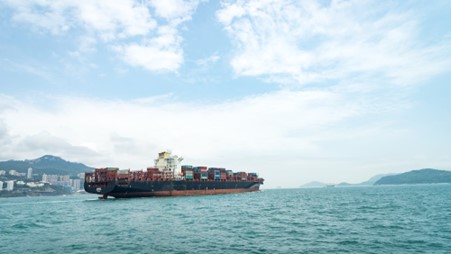

There are various benefits to shipping cars within their own dedicated containers (FCL) although sometimes the cost may be greater than the RoRo options that are available. These include;
- Protection – The car is fully enclosed in the container, and is not handled until it reaches its final destination, meaning less chance of damage.
- Security – The container is sealed for transit, and this prevents any unauthorised access to the car or any items shipped along with it.
- Faster Shipping – Rather than waiting for other vehicles to be ready for shipping, or releasing by Customs at destination, on a shared container service, once your car is ready it can move by itself.
Autoshippers – The Car Shipping Experts
At Autoshippers, we have over 25 years of experience safely shipping classic cars like this MG MGB worldwide. While each make and model has its own specifications, we have shipped countless vehicles to customers globally using tailored FCL solutions, along with other options such as Ro/Ro or shared container.
Take a look at some of our loading videos, such as Professionally Loading a McLaren & a Land Rover together in a 40ft container or Securely Loading a Jaguar XK150S OTD which gives you an insight on how we securely position and load a car into it’s own dedicated shipping container.
We are proud members of the British International Freight Association (BIFA), demonstrating our commitment to professionalism and service when shipping vehicles internationally. We adhere to stringent standards and procedures while also providing personalized attention to the special needs of exotic car owners.
No matter what make or model vehicle you need to ship, we have the experience and capabilities to handle every aspect smoothly and securely. Check out our FCL container shipping page to learn more and get a free quote online. Or contact us today by calling +44 117 982 8123 / 0800 389 0784 or via our contact form, to speak with one of our specialists about arranging tailored FCL or other car shipping services for your prized vehicle.


